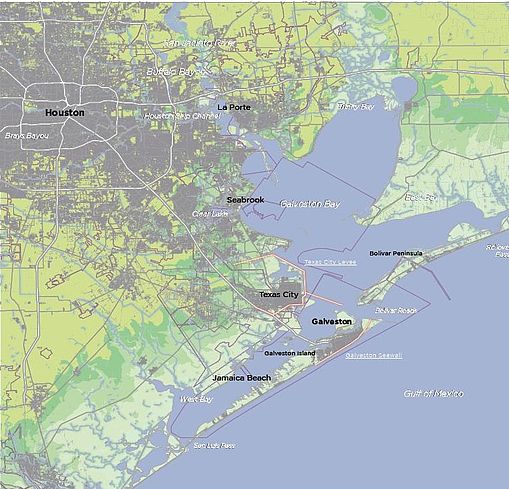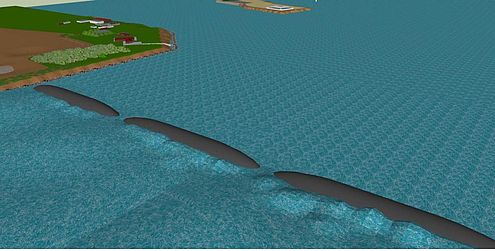Flood Risk Reduction in the Houston Galveston Bay Area
The Houston Galveston region (Texas, USA) is highly prone to hurricane-induced flooding. This became painfully clear in the wake of Hurricane Ike in 2008. The Category 2 hurricane caused more than $25 billion in economic loss, despite the fact that the greatest impact missed the cities of Galveston and Houston.
As the region recovered from the large scale disaster, several institutions focused their attention towards finding a long term solution in order to prevent these sort of disasters from happening in the future. In particular Texas A&M University at Galveston and the Severe Storm Prediction, Education and Evacuation from Disasters (SSPEED) Center at Rice University in Houston are active in finding a solution that increases the safety from flooding, without severely affecting the industry and the environment.

In order to find an optimal solution, these institutions have collaborated with TU Delft to use lessons learned from our own large-scale flood protection programs, like the Delta Works. These collaborations span across three TU Delft faculties (Civil Engineering, Architecture and Technology, Policy and Management) and have resulted in more than 30 research- and student projects so far. These projects are funded by the Delft Infrastructure & Mobility Initiative (DIMI) and have recently been summarized in the book ‘Delft Delta Design: Houston Galveston Bay Region. Texas, USA’ by Kothuis et al (2015), which is available here.
Two examples of Civil Engineering graduation projects are shown below:


In the coming years TU Delft and Texas partners will continue to cooperate on investigating structural-, but also nature based solutions. The many functions and stakeholders, combined with the enormous impact of storms and hurricanes, will continue to make the Houston Galveston Bay Region a very interesting research area.
In 2015, Texas A&M University expanded the collaboration and (student-)exchange between the United States and the Netherlands in the form of a Coastal Flood Risk Reduction Program, funded by the National Science Foundation Partnerships for International Research Education (PIRE). More information on this program can be found here.
Conceptual design of the coastal spine
Over the past years the concept of the Coastal Spine (also named Ike Dike) has been developed as a solution to reduce flood risks for the region. The main aim of the coastal spine is to limit the inflow of hurricane surge into the Galveston Bay and thus protect Houston, Galveston and other communities around the bay. TU Delft has contributed to sketch and conceptual designs of the coastal spine protection system for the region. This was done in collaboration with partners Texas A&M Galveston, Royal Haskoning DHV, IV Infra and Defacto.
An overview of the design is shown below. Reports on various topics can be downloaded below:
Coastal spine flyer (2015)
Coastal spine interim design report (2015)
Land barrier preliminary design (2016)

